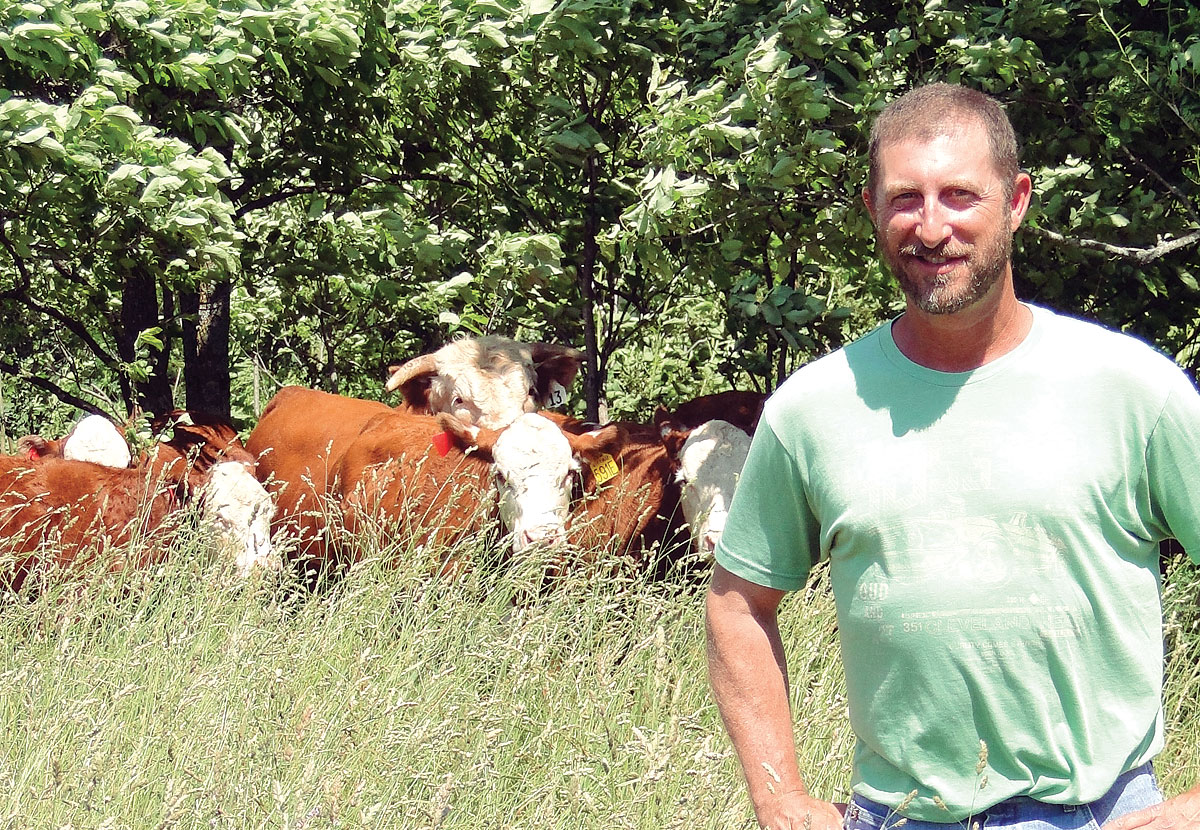 George Anderson had a varied career in the poultry industry. Coming out of college he worked as a field man for Tyson's for a couple of years, and then four years for George's. However, he soon found that being his own boss was more to his liking. “I don't play well with others, I don't think. It took me a long time to figure out if my boss did something stupid, he didn't want me to tell him,” joked George. So, for the past 15 years he's been a grower for George's at his Dogwood Farm in Lowell, Ark., and his second location in Clifty, Ark.
George Anderson had a varied career in the poultry industry. Coming out of college he worked as a field man for Tyson's for a couple of years, and then four years for George's. However, he soon found that being his own boss was more to his liking. “I don't play well with others, I don't think. It took me a long time to figure out if my boss did something stupid, he didn't want me to tell him,” joked George. So, for the past 15 years he's been a grower for George's at his Dogwood Farm in Lowell, Ark., and his second location in Clifty, Ark.
In addition to the poultry houses, George has a cattle operation. “We're a cow-calf operation, and we've started to background our own yearlings. The cows are mostly on the Clifty operation.” Dogwood Farm in Benton County has 13 barns. “There are six 40×400's that are '96 models, and five of the 23×500's that are '99 models and then there are the '94 models. All the barns are tunnel ventilated. We had to retrofit some of them. We tunnel ventilated the ones that needed retrofitted in '99, and then we came back in '04 and installed controllers and all that. I've seen an improvement in mortality with the tunnel ventilation. In '98 you'd pick 'em up by the thousands when it was hot, before tunnel ventilation.”
Growing up in Springdale on a turkey farm probably predisposed George to a life in poultry. “I still live on the place that my great-great-great grandad homesteaded.” And George is passing on his lifetime of experience and knowledge to his children. “They help out on the farm. They're starting 4-H this year. We're building a little show barn at the house to get them started. We're getting a steer to start them out with.”
George has seen the evolution of the poultry business since he graduated from the University of Arkansas in 1990 with a degree in poultry science and started out with Tyson's. “When I got out of college, we still had people with eight foot waterers. George's had put in during the mid 80's dry cup drinkers, an upside down nipple drinkers. It wasn't that much more sanitary than the old eight footers, but the floor was drier. At the time, the industry couldn't make the leap of faith that a chicken could drink from something hanging upside down.
"I've seen lots; from going to the curtain ventilation to the tunnel ventilation and the regimented power ventilation that we have now with the controllers. It's just way different when you had a couple of sidewall fans and an old thermostat. I remember what a huge revelation it was when, as a right out of college serviceman with Tyson's, they wanted everyone to throw their 10 minute timer away and get a five minute timer and cut the cycle in half.”
One of the newest things that George has seen, and is giving a go, is windrowing. Windrowing is the lingo for in-house litter composting. “If we can not buy any more rice hulls and not have to buy any more formaldehyde, that will be a huge deal for me. Keeping the houses drier and our performance up is my goal.”
Technique is a big part of windrowing. But it's not too complex. “Lift the Priefert blade and roll the litter. I didn't buy the Cadillac Lewis Windrow machine. I probably should have with as many houses as I've got. I wanted to try this though. We're just going to roll it up. Then let it set for three or four days, turn it, and let it set for three or four more days and then spread it out. When it gets to 130 degrees, it kills most of the bacteria. You can get online, there's lots of information out there. The point is to get it hot enough to kill the pathogens and then through the composting process cook out the ammonia and moisture.”
George usually has two weeks of downtime between flocks, and when asked if that seems to be enough time, he joked, “barely.” Having tried windrowing a couple of times in the past, and starting on this new journey with it, George does recommend giving it a few times to see results. George, his family, and crew intend to keep on “rolling” with the changes in the poultry industry, and for now, that includes giving windrowing a few more goes.







